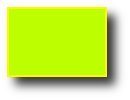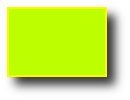

FLUORESCEIN SODIUM POWDER
C.I. ACID YELLOW 73
Colour Index No. 45350 (CI 45350)
Water Soluble
CAS No 518-47-8 / EC No 208-253-0Fluorescein is a synthetic organic compound available as a dark orange/red powder soluble in water and alcohol. It is widely used as a fluorescent water tracer and as a general dye.
Uses for Fluoresceine dye
- Water tracer - detectable at very low levels. Used for effluent monitoring.
- Dye used in the Chemical industry. especially useful for -colouring detergents and degreasers etc. - stable in high alkaline conditions.
- Used to determine sensitivity of fluorometers.
- Cosmetics
- Soap - cold process or melt and pour
Fluorescein Sodium Dye is a recognised and approved tracer dye used by water authorities. It is used at low levels of 1kg per million litres of water (i.e. 1ppm) which permits visual determination of water flow. At these levels it is not considered to be harmful to fish. Below is a link to recent research into this subject:
Chemical & Physical properties
Other names: Water Soluble fluorescein; C.I. Acid yellow 73, Fluorescein disodium salt, Uranine, Funduscein, CI 45350,
M.Wt: 376.28
CAS No: 518-47-8
Formula: C20H10Na2O5
Appearance: Odourless orange powder
Melting point: >300C
pH (1% solution): 8.0 - 9.5
pH range: 4.0-6.0
Solubility: soluble in water, slightly soluble in ethanol, MPG, DPG, glycerine
UV visible: 491nm, 493.5nm, 490nm
Excitation wavelength: 460nm
Emission wavelength: 515nm
The fluorescence of this molecule is very intense; peak excitation occurs at 494 nm and peak emission at 521 nm.
Fluorescein has a pKa of 6.4, and its ionization equilibrium leads to pH-dependent absorption and emission over the range of 5 to 9. Also, the fluorescence lifetimes of the protonated and deprotonated forms of fluorescein are approximately 3 and 4 ns, which allows for pH determination from nonintensity based measurements. The lifetimes can be recovered using time-correlated single photon counting or phase-modulation fluorimetry. (Source: Wikipedia)
PLEASE NOTE: This product is not for human or animal consumption.
Click here for MSDSBiochemical research
In cellular biology, the isothiocyanate derivative of fluorescein is often used to label and track cells in fluorescence microscopy applications (for example, flow cytometry). Additional biologically active molecules (such as antibodies) may also be attached to fluorescein, allowing biologists to target the fluorophore to specific proteins or structures within cells. This application is common in yeast display.
Fluorescein can also be conjugated to nucleoside triphosphates and incorporated into a probe enzymatically for in situ hybridisation. The use of fluorescein amidite shown above allows one to synthesize labeled oligonucleotides for the same purpose. Yet another technique termed molecular beacons makes use of synthetic fluorescein-labeled oligonucleotides. Fluorescein-labelled probes can be imaged using FISH, or targeted by antibodies using immunohistochemistry. The latter is a common alternative to digoxigenin, and the two are used together for labelling two genes in one sample.
"Fluorescein sodium", the sodium salt of fluorescein, is used extensively as a diagnostic tool in the field of ophthalmology and optometry, where topical fluorescein is used in the diagnosis of corneal abrasions, corneal ulcers and herpetic corneal infections. It is also used in rigid gas permeable contact lens fitting to evaluate the tear layer under the lens. It is available as sterile single-use sachets containing lint-free paper applicators soaked in fluorescein sodium.
Intravenous or oral fluorescein is used in fluorescein angiography in research and to diagnose and categorize vascular disorders including retinal disease macular degeneration, diabetic retinopathy, inflammatory intraocular conditions, and intraocular tumors. It is also being used increasingly during surgery for brain tumors.
Diluted fluorescein dye has been used to localise multiple muscular ventricular septal defects during open heart surgery and confirm the presence of any residual defects.
Air-Sea Rescue applications
During World War II, German aircrew carried small containers of fluorescein. In the event of parachuting into the sea after being shot down, the dye would be released into the water. This produced a vivid marking that could be seen from the air over long distances and aided the air-sea rescue of the downed crew. This was later adopted by other air forces.
One of its more recognizable uses was in the Chicago River, where fluorescein was the first substance used to dye the river green on St. Patrick's Day in 1962. In 1966, environmentalists forced a change to a vegetable-based dye to protect local wildlife
Other uses of fluorescein include using it as a water-soluble dye added to rainwater in environmental testing simulations to aid in locating and analyzing any water leaks, and in Australia and New Zealand as a methylated spirit dye.
Fluorescein dye solutions, typically 15% active, are commonly used as an aid to leak detection during hydrostatic testing of subsea oil and gas pipelines and other subsea infrastructure. Leaks can be detected by divers carrying ultraviolet lights.

